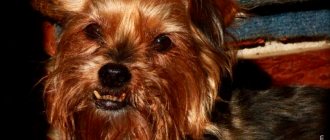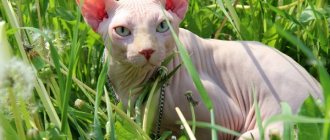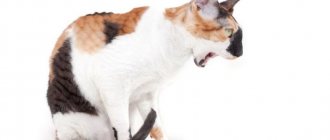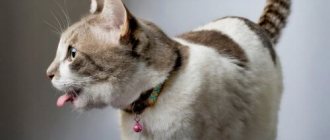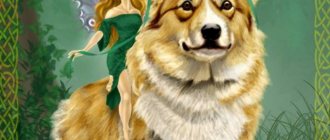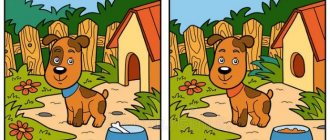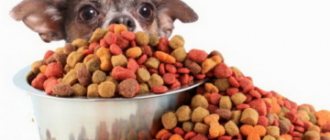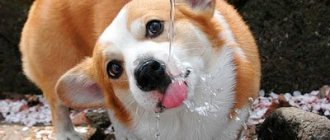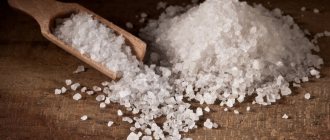There are two separate breeds called corgis: the Welsh Corgi Pembroke and the Welsh Corgi Cardigan. In modern breeding, mixing of blood is not allowed. The breeds are easy to distinguish by their external characteristics. At the same time, all corgis are characterized by the following features:
- compact size and strong build;
- good disposition, affection for owners;
- friendliness to children;
- high learning ability and observation;
- energy and mobility;
- lack of fear;
- adaptation to different conditions of detention;
- the need for early socialization;
- easy care;
- tendency to overeat;
- good health subject to maintenance rules.
Characteristics of the Welsh Corgi dog breed
CardiganMale:
Bitch:
| |
PembrokeMale:
Bitch:
| |
Price:
Lifespan: 12–15 years. | |
Welsh Corgi is a dog breed, the price of which is determined depending on the region and market saturation. There are not many breeders seriously involved in breeding, but the popularity of the breed is constantly growing. Therefore the prices are quite high. That being said, there is a tendency that Cardigan puppies tend to cost more than Pembroke puppies.
| Frequently asked questions | Welsh Corgi Pembroke | Welsh Corgi Cardigan |
Are the Pembroke Welsh Corgi and the Cardigan Welsh Corgi the same breed? | No, these are two different breeds with their own standards. | |
Is it difficult to care for | An unpretentious breed, but puppies can play mischief in the house. | |
What climate suits them? | Easily adapt to any climatic conditions. | |
Where is it better to live: in an apartment or in a house? | They feel great both in the house and in the apartment. | |
How often should you bathe? | No more than once a month | As necessary, no more than once every two months. |
Is grooming necessary? | No, regular brushing is enough. Molting in the spring-summer period is very intense. | |
How often should you go for a walk? | Walks are required at least twice a day. During walks, it is necessary to organize active games for your pet. | |
Does your pet need clothes? | Only dogs with a small undercoat and short hair get cold. For the rest, there is no need for clothing, but owners often sew overalls for their pets, in which they look touching. | |
Are there any difficulties with parenting? | If there are mistakes in upbringing, it can become a dictator dog. | They can be aggressive if they make mistakes in their upbringing. |
What health problems might there be? | There are no genetic health problems, but overeating may result in loss of activity and obesity. | |
Who is the breed not suitable for? | People who are not ready for constant communication with an animal. | People with mobility difficulties and too busy. |
Can I buy for a child? | The Welsh Corgi gets along well with children, but a child of at least 10-12 years old will be able to work with this active dog. | |
Is it possible for people without experience in keeping dogs to own one? | Yes, Welsh Corgis have the most comfortable temperament for inexperienced owners. | |
What kind of work can they do? | They often work as shepherds, specializing in driving geese. After completing a special course, they can engage in tracking work and be used as a watchdog. | |
Can it be kept with other animals? | Yes, they get along easily even with cats, especially if they grew up together. | |
Advantages of the breed
- Small sizes.
- High adaptation to any living conditions.
- Friendly character.
- Strong attachment to a person.
- They easily find a common language with children.
- They love active and active games.
- They have a sense of humor.
- Good learning ability.
- Liveliness of character and curiosity persists into old age.
- There is no tendency to create noise around yourself.
- They do not show aggression towards strangers.
- Get along with other pets.
- There are no particular difficulties in the content.
- Good health.
Flaws
- Corgis are so comfortable with humans that they are easy to spoil.
- They may show a tendency to dominate.
- Some stubbornness and independence, characteristic of all herding dogs.
- They love to gather all living things into a “flock” (echoes of the shepherd past).
- Pembrokes can often test the owner's patience and are more suitable for young and active owners.
- Without socialization, Cardigans can become aggressive towards strangers.
- There is no feeling of fear; corgis can engage in fights with opponents of any size.
- Along with a good appetite, there is a tendency to overeat.
- Excess weight can lead to problems with the musculoskeletal system and heart.
Care
The Cardigan Welsh Corgi is generally an unpretentious dog. The coat does not require special care, but the dog should be brushed about 1-2 times a week, with the exception of the shedding period, when a huge amount of hair needs to be combed from the dog in spring and summer.
Frequent bathing is not recommended, only when dirty and with special cosmetics for dogs of good quality. It is also necessary to monitor the cleanliness of teeth and ears, and the length of nails.
Like all shepherds, Welsh Corgis have a good appetite. Owners need to be careful and moderate in this matter when starting to accustom the puppy to proper nutrition: obesity from frequent overeating can lead to significant health problems, for example, back disease from the strong pressure of excess weight on it.
Feeding must occur at a strictly defined time and in a designated place. Food should be balanced, and almost half of the diet should be allocated to meat, with the exception of chicken, the presence of which is contraindicated on the menu. You can give your dog cereals (buckwheat or rice) and vegetables (carrots, beets, peppers, zucchini). Fish is welcome.
The Cardigan Welsh Corgi loves active walks in the fresh air. It should be regularly loaded with physical activity, including to avoid obesity. The best option: several (at least 2) walks a day, 1-2 km.
What is the difference between Pembrokes and Cardigans?
These two breeds are very close in character. The main differences relate to the functions that their ancestors had to perform. It has been noticed that cardigans are more flexible, calm and balanced, and always try to be as close to their owner as possible. Pembrokes are more easily excited and react sensitively to everything. They are very curious, sticking their nose wherever they can.
There is also a difference in the exterior. Cardigans look larger, their heads are larger, and their ears are larger. The front of the body is heavier than the back. This is a strong dog with short legs. The tail is long, pubescent, reminiscent of a fox.
Pembrokes have a proportional build, their ears are smaller and more pointed. The length of the tail varied over the years. In the original standard it was very short, but later it became longer. It is often docked. The dog wears an undocked tail in a ring, very rarely in a pipe. Now breeders are working to return the short-tailed Pembroke Welsh Corgi to the original standards.
Corgi: dog character, behavior
Royal, shepherd, fox dog - they call it corgi. The dog breed really belongs to the herding shepherd dogs. And this type of activity significantly influenced the character of the dog. This is a big dog in the body of a baby, an ideal city pet with a friendly attitude towards everyone. At the same time, he can stand up for himself and his family. The breed is most suitable for people for whom active walks are the norm. They fit perfectly into families with children who love dogs. The character of a pet largely depends on its upbringing.
However, there are traits that are common to most representatives of the breed:
- kindness and love;
- optimism, perkiness and charm;
- affection and devotion to owners;
- presence of a sense of tact.
The Welsh Corgi has become a “calling card”. She almost never leaves the face of these dogs, pleasant in all respects. And this smile is fully consistent with the character of the pets.
Behavior at home
Welsh Corgis are family favorites. They have innate intelligence and even a sense of humor. They love to play with children and will happily run around the yard with them. They are called natural-born clowns. Moreover, corgs do not have importunity. The owners say that this is a dog without pretensions. But we must not forget that it is human-oriented. This means that communication is something that corgis always need. The description of the Cardigan and Pembroke breeds is the same in this regard.
Little foxes are great at feeling people's moods. Pets will not bother you if no one around you shows a desire to play. Therefore, the breed is suitable for both active young people and owners who prefer a more sedate way of life, but only if good walks are provided, otherwise a bored corgi will spoil things.
The Welsh Corgi has another feature associated with its herding past. The dog is used to gathering everyone into a pack; he does this by biting people on the heels. This behavior is typical of puppies, it needs to be stopped, but gently, without screaming. If the owner is rude, problems with obedience may arise in the future raising of the puppy.
Behavior on the street
Corgi dogs are active on the street. They are curious, but will not leave their owner if they get carried away by something interesting. After all, the ability to concentrate is a distinctive feature of pets. And “korzhiki” do not like to be deprived of attention. They may become jealous if their beloved owner ignores them. Leaving a corgi alone in the yard is also not a good idea, even if you live on a farm and the dog has room to run around. He likes to walk only in company. You can only leave him alone as a punishment. And you shouldn't abuse it.
Attitude towards strangers and animals
Welsh Corgis treat strangers differently. It can be curiosity, indifference, distrust, and extremely rarely aggressiveness. Bitches behave calmer, males can show aggression, especially when it comes to unauthorized entry into the house.
Corgis are good watchdogs. They notify their owner of the approach of strangers by barking, and if necessary, rush to defense. But it’s comfortable to travel with them, there are no special problems at exhibitions. The main thing is that they do not meet an opponent on the way. If there is a threat, the corgi rushes at the opponent, and size does not matter.
Corgi care: coat, eyes, ears
If there is an ideal dog for new dog owners, it is the Corgi. Caring for and maintaining cute “smiles” requires a minimum of effort. In everyday life they are real minimalists. They will find a place for themselves even in a tiny apartment. Pets are very clean by nature, and are also easy to train.
Grooming
Wool requires the utmost attention from the owner, especially during the molting period. At the very beginning, the pet needs to be thoroughly combed. Typically, cardigans are combed daily during this period, the rest of the time - about 2-3 times a week. Pembrokes are less demanding in this regard. They are brushed once a week, and during shedding - every other day. From the inventory you will need: a bristle brush, an elastic wire brush and a metal comb with sparse rounded teeth, which is used to comb out the hair behind the ears and under the paws, and combs.
Washing and bathing
Bath the corgi as needed. If the wool gets dirty during a walk in rainy weather, wipe it with a damp cloth. If this is not enough, the pet is rinsed with warm water in the shower without shampoo. Animals can only be washed with high-quality pet shampoo. Cheap products ruin wool. You need to be especially careful about bathing during the molting period. These breeds lose a lot of hair and become vulnerable to cold and moisture during this time. It is necessary to protect pets from drafts and, if possible, dry their fur with a hairdryer.
Eye hygiene
Eyes should always be clean. If clear discharge accumulates in the corner, this is normal. They are simply removed with a napkin. Greenish and dark brown discharge and wet spots in the eye area should alert you. In this case, you need to contact a veterinarian.
Ear hygiene
The ears of adult corgis are examined weekly, and more often for puppies. After all, while the ears of young animals are actively growing and forming, they become more dirty. Clean them with a cotton swab, or you can use a special product. It is important to carefully examine the auricle during the procedure in order to notice possible problems in time.
Nail care
Nails need to be trimmed regularly. The puppy is accustomed to the procedure as early as possible. Repeat it weekly. At the same time as the keratinized layer of the claw, the hair inside the paw is also removed, and the excess between the toes is also cut off. It is especially important to treat the paws of puppies in this way, it promotes the correct formation of the metacarpus.
Essential equipment for grooming
During the shedding season, Corgis need to be brushed thoroughly. This will get rid of the presence of fur in imaginable and inconceivable places.
To properly care for the coat, you will need three items:
- Comb with metal teeth.
- Furminator or another name - slicker.
- Brush with natural bristles.
A rare comb equipped with metal teeth will be needed to thoroughly comb out tangled mats from the animal’s fur. Corgis are active, mobile pets; debris, blades of grass, and branches constantly appear in their fur.
The corgi has a dense coat with a thick undercoat; it is not recommended to comb the dog with a fine-toothed comb - it will cause unpleasant pain to the dog. After a couple of procedures, your beloved pet will begin to avoid combing and hide in secluded corners when he sees a comb in his hands. Sharp metal teeth can scratch your pet's skin; choose combs with rounded teeth.
The plastic teeth of the comb will cause little pain, but are unreliable; the teeth will simply break off during the procedure and become entangled in the dog’s hair along with branches, debris and tangles. If your pet has long, thick fur, choose combs with long, strong teeth to comb your pet thoroughly.
Tail docking
Tails are docked only on Pembrokes; Cardigans are always tailed. In Europe and a number of other countries, this procedure has recently been prohibited. In Russia, the decision on this matter is made by the breeder in the first three days of the baby’s life. Many pemas also have an innate bobtail gene. Such puppies are called bobtails or shortcuts. Bobs may appear in the litter if at least one of the parents is stubby. But it is impossible to control this process. It has not yet been possible to fix the bobtail gene in corgis. The Pembroke breed description according to the FCI standard allows for both docked and long tails. But you need to take into account that not all countries allow bobs with docked tails to participate in exhibitions.
Walking and exercise
Don't let the pet's compact size fool you. This is a real shepherd dog with short legs. If you look at what the breed standards look like for a corgi, the first thing that catches your eye in the description is the high activity of the dog. This means that she needs regular exercise - 2-3 times a day, for at least an hour. It is advisable to let the shepherdesses run freely without a leash. You also need trotting walks at different paces, which will strengthen the muscles and spine. Corgis will happily accompany their owner while jogging or cycling at a moderate pace. Swimming is useful to strengthen the vestibular system. They will be happy to engage in agility; they can easily be taught various tricks.
Corgi - care and maintenance in the apartment
How to care for a Welsh Corgi? In general, caring for this breed is not as hard work as it might seem. If you follow the basic rules and requirements, gradually the owner himself will get used to taking care of the pet, so that he will no longer have problems.
Hygiene and bathing
It is necessary to accustom your baby to bathing from an early age, so that in the future it does not turn into a real problem. Too often water procedures are not carried out. This is done either as the dog gets dirty, or only 2-3 times a year.
Important! When bathing, you must ensure that water does not get into the animal's eyes, ears and nose. Don't forget about regular teeth brushing and nail trimming.
Bathing a dog at home
Natural food
The breed practically does not suffer from food allergies, but the one that eats a lot is the Corgi. You should follow the diet and feed the animal on time and in moderation. If preference is given to dry food, then it should be premium or super premium.
Homemade food must contain lean meat (beef, poultry), vegetables, vitamins and minerals. Sweets, pickles, smoked foods and flour products are strictly contraindicated.
Walking and exercise
The corgi may be a domestic dog, but it is a very active animal that needs regular walks. They are quite curious and can be distracted by a street cat, so you should carefully monitor the animal and not let it off the leash.
Attention! On average, a pet needs to breathe fresh air at least 1.5-2 hours a day.
Tendency to diseases, vaccinations
Welsh Corgis are one of those rare breeds that have not yet developed genetic diseases. But they also have a weak point. This is a comprehensive love of food, or more precisely, of eating it. Dogs are prone to gluttony. If you do not control portions, excess weight will quickly appear, and this is a sure path to the development of various diseases, and often to early death.
The remaining diseases to which corgis are susceptible are typical for breeds of this type:
- hip dysplasia;
- degenerative changes in intervertebral discs;
- eczema;
- retinal atrophy;
- glaucoma;
- kidney and urinary tract diseases;
- periodontal disease.
“Korzhiki” also suffer from such an unusual disease as narcolepsy. The pet just suddenly falls asleep in the most inappropriate place. This is a disease of the nervous system. During attacks, the dog should not be disturbed.
Vaccinations, anti-worming treatments
The schedule for vaccination and deworming is determined by the veterinarian. Imported complex-action vaccines are used more often. Two weeks before vaccination, puppies are given anti-helminth medications. The first vaccination is given at the age of 8–9 weeks with NobivacDHPPi, Nobivac Lepto vaccines, after 4 weeks it is repeated and a rabies vaccine is given (Nobivac Rabies). Revaccination per year. Adult dogs are vaccinated once a year.
Care and care
- If you decide to get a dog of this breed, remember that you should not overfeed your pet. Dogs are prone to obesity, leading to spinal problems. Dogs have a long body; it is difficult for a baby to support the weight of his body on his short legs. Carefully monitor your diet and walk more and more actively.
- Small dogs are favorably characterized by good health. Dogs are not plagued by various “breed” diseases. You will need to clean your ears and trim your nails every 3-4 weeks. You shouldn't bathe your baby often unless the fur gets dirty during a walk. You can avoid trouble by buying your pet a jumpsuit for walking.
- From the moment you purchase your Welsh Corgi, you will need to get vaccinated and be examined by a veterinarian to rule out unpleasant diseases. If your pet is sick, do not use self-medication or internet advice. It's better to see a doctor.
What to feed?
Welsh Corgis are suitable for both ready-made diets and natural feeding. Some breeders believe that they should not be given dry food. They believe that this breed prefers wet food. In fact, it is more important to choose high-quality food and dose it correctly.
For “natural” food, the requirements are usual – nothing spicy, smoked, salty, fatty or sweet. In addition to vegetables, meat (chicken is not suitable), boiled fish, eggs, cereals and dairy products, you need to add vitamins and mineral supplements. What you don’t need to feed is: potatoes in any form, pasta, millet and semolina, mushrooms, tomatoes, eggplants. Sharp bones are dangerous for dogs.
Puppy diet
Corgi puppies are delivered to new owners at 2-3 months of age. During this period you need to feed them at least 5 times a day. At 6 months of age, the number of feedings is reduced to 4. Then the puppies are transferred to 3 meals a day. 8 month old puppies are considered adults and are fed twice a day.
If dry food is used, it is first soaked in water. There is no need to do this later, just ensure that the puppy has constant access to water. Natural feed includes scraped beef, raw. Add vegetable stews, rice or buckwheat porridge to them. Cottage cheese and fermented milk products are good for puppies. Raw vegetables are chopped before feeding, and you can season them with vegetable oil.
Adult dog diet
The basis of an adult dog’s diet is meat products, cottage cheese, cereals and vegetables. It is also important to correctly calculate the daily food intake to prevent your pet from becoming overweight.
An example calculation looks like this:
- meat – 20 g per 1 kg of weight, cottage cheese 30 g/kg (meat can be replaced with boiled boneless fish once a week);
- kefir, yogurt, unsweetened yogurt – 50 – 100 g/day;
- vegetables and fruits – 100–200 g/day;
- porridge – up to 3 glasses (depending on the dog’s weight);
- vegetable oil – up to 1 tbsp/day.
What to feed for the first 3 months?
A Welsh Corgi puppy can be fed both natural food and kibble. The main condition is not to mix them.
Products that must be included in the diet:
- Lean meat.
- Good quality porridge (buckwheat, oatmeal, rice).
- Eggs.
- Dairy products.
- Offal.
- Boiled fish.
- Vegetables (fresh or boiled).
You can give cheese or dog biscuits as a treat..
Training and education
Welsh Corgis are very smart, they quickly grasp what their owner wants from them. But they don’t like monotonous training and monotonous activities. It is important not to overtrain the dog. Repeated commands can lead to a loss of interest on the part of the student, and he may even lose the skills he has already acquired.
These cute little foxes have a strong-willed character. Therefore, you cannot follow their lead. However, shouting and sudden movements will not achieve anything; the best incentive for a pet is praise and various goodies. Positive motivation in this case will give greater results than punishment.
Choosing and caring for a puppy
When choosing a puppy, it is important to choose the right breeder. The best option is a specialized nursery with a good reputation, where you can see not only the baby, but also his parents. There you can also get acquainted with the conditions of detention and understand whether the breeder saves on them. If this breed is new to you, it is better to seek the help of a specialist. Otherwise, the risk of buying a problem puppy is very high.
Do not be tempted by the low price, it can result in serious expenses for treatment. Do not buy mestizos - they are almost always problematic. Choose a healthy puppy with breed-appropriate characteristics. And decide on the purpose of such an acquisition. Will it be a show dog, companion, athlete or entertainer? The Welsh Corgi can handle all roles.
Who are fluffies and can you choose them?
Fluffy puppies, called fluffies, are found in litters of both Cardigans and Pembrokes. They have long soft fur. The gene responsible for it is recessive. Therefore, for such a fluffy to appear, it must be present in both manufacturers. All newborn puppies have almost the same coat. Only a professional can distinguish fluffies from the standard. But already at one month of age, the fur looks different. It is longer and fluffier, especially on the paws and in the ear area.
And although such puppies look larger and stronger, it is believed that this is a breeding marriage. They are not allowed for breeding and cannot participate in exhibitions. It is more difficult to care for them - long and fluffy wool is prone to tangles. But they retain the corgi's temperament and appearance.
First days in a new house
You can't leave the puppy alone. This is a lot of stress for him. In the first days he requires maximum attention. Organize a place for him to feed and sleep. Buy toys to give your baby something to do. As for hygiene, first the baby can wear a diaper; after all the vaccinations have been done, you can take him outside.
Shoes, clothes, and wires should be removed from places accessible to the puppy if you do not want the dog to diversify his menu with their remains. If you leave your little corgi alone for a long time, he may start tasting wallpaper and rugs. It’s generally better to remove carpeting until the baby grows up - it’s easier to clean, and the dog’s paws won’t slip.
Welsh Corgi Cardigan and Pembroke breed standards (FCI Standards No. 38 / FCI No. 39)
| Welsh Corgi Cardigan | Welsh Corgi Pembroke | |
| FCI classification | Group 1. Shepherds and cattle dogs (with the exception of Swiss Shepherds). Section 1. Shepherd dogs. | |
| Usage | Companion dog | |
| Appearance | Strong, dense, mobile and hardy. Stretched, with a tail like a fox. | A squat, strong dog, compact and active, with an intelligent expression in the eyes. |
| Temperament, behavior | Alert, smart, balanced, not timid and not aggressive. | Brave, but not aggressive, active. Has working qualities. Sociable, does not show cowardice. |
| Head | Foxy in shape and expression. The proportions of the head and muzzle are 5:3. | |
|
| |
| Frame |
|
|
| Limbs |
|
|
| Movements | Free and smooth. | Free and energetic. |
| Wool | Middle length. The undercoat is short, thick and dense, waterproof. | Short or medium length, rigid structure. |
| Color | Any, with or without white markings, but white should not predominate. | 4 varieties of color: red and white (red without white is possible), tricolor in two varieties - with a red or black head, sable and white. |
| Height | Height at withers 30 cm. | Height at withers 25–30 cm. |
| Flaws | Deviation from the above parameters is a disadvantage. | |
Origin story
The popularity of the breed came thanks to Queen Elizabeth. Her favorite Pembroke Welsh Corgis are participants in many photo shoots. It must be said that the queen made a significant contribution to the development of the breed. But at the dawn of the formation of the breed, the dogs performed difficult work in the mountains of the Kingdom. Both Pembrokes and Cardigans herded herds of cattle, sheep, and Welsh ponies. They were separated by high peaks, thanks to which it was possible to preserve the purity of these two breeds. In 1934, the Pembroke and Cardigan were recognized as separate breeds in Britain.
Grooming of Welsh Corgi Pembroke dogs
“Grooming” is a term that denotes comprehensive care for a pet, covering the care of hair, teeth, claws, ears, eyes, anal glands, and grooming dogs.
Coat: Grooming needs for the Pembroke Welsh Corgi are minimal, but corgis' seasonal shedding requires regular grooming. Regular brushing reduces the loss of hair remaining on carpets and chairs.
Updates for Your Corgis: Choosing the Best Dog Bowl
Welsh Corgis shed twice a year, usually in spring and autumn. The easiest way to deal with this is to soak your pet in a warm bath and comb out the dead hair while the dog is wet and soaped. In addition, it is necessary to brush the dog daily for two weeks. The exception is excessively fluffy, long-haired Corgis. Long hair requires regular additional brushing or periodic haircuts. The fur on the buttocks should also be trimmed to keep this area of the dog always clean.
Paws and Nails: Of course, like any other breed, regular nail trimming is important and will keep your toes from getting hurt. The fur around the paw pads is trimmed to prevent dirt and snow from getting into the house. The best practice is to trim nails at least once a week. This will provide a little length and will remind your pet that nail trimming is not a reason to panic.
The best tool for trimming nails is a nail clipper or special nail scissors. Since it's so easy to accidentally cut a nail too short (it will bleed and cause pain), most people prefer clippers with a length lock.
Feet: Especially for shows, the fur on the Welsh Corgi's feet should be trimmed. The best way to do this is with an electric machine. If you have to cut with scissors, remember that the Welsh Corgi's toes are webbed and be careful - only cut the coat!
Ears: The ears should be free of waxy deposits and covered with hair. A tampon with mineral oil or a special product will be very effective.
